The Nudge That Changed Everything: Transforming Sales Performance
Retail’s conversion gap: Why brands and retailers can’t afford to fly blind
The cost of missed moments
Retailers and brands spend millions creating training content: videos, PDFs, product knowledge modules. Yet, most associates still can’t answer basic customer questions in the aisle. The problem isn’t content quality. It’s that most retail associate training never reaches the floor in time to influence behavior.
Picture this: A leading sneaker brand launches its most anticipated product in years. The marketing engine is humming. Endcaps are built. Emails are sent. Customers walk through the door.
Then it happens:
- “Is this shoe true to size?”
- “What’s the difference from last year?”
- “Do you have this in blue?”
The answers vary. Some are right. Some are guesses. Some never come. The customer walks away.
And no one at HQ sees it happen.
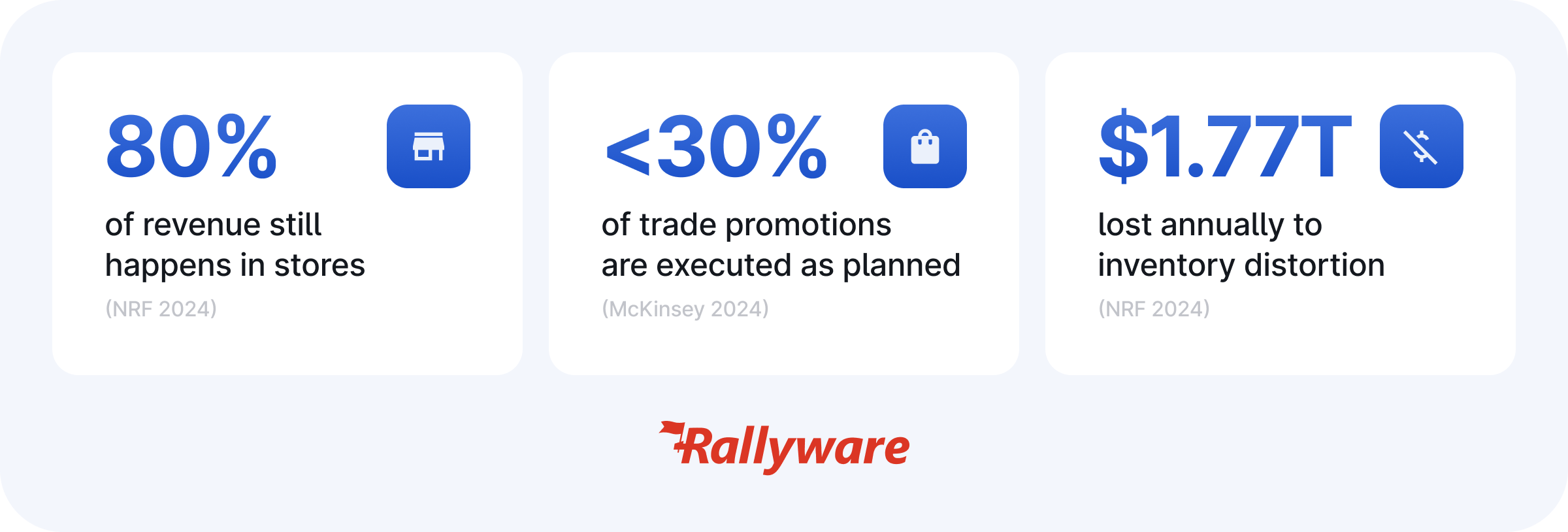
Why this hurts everyone
In many brand-retail relationships, enablement is disconnected from reality:
- Content is pushed monthly or quarterly, after key campaigns have started.
- Associates are expected to complete long training sessions with no context.
- There’s little visibility into who saw what, when, or how it impacted performance.
So while trade marketing campaigns launch, stores scramble. Conversion suffers. Execution lags.
For brands:
- Trade dollars vanish with no measurable impact
- Feedback loops are lagging or nonexistent
- Sell-through suffers, relationships strain
For retailers:
- Execution confidence is low
- Returns rise
- Conversion drops
- Labor productivity falters
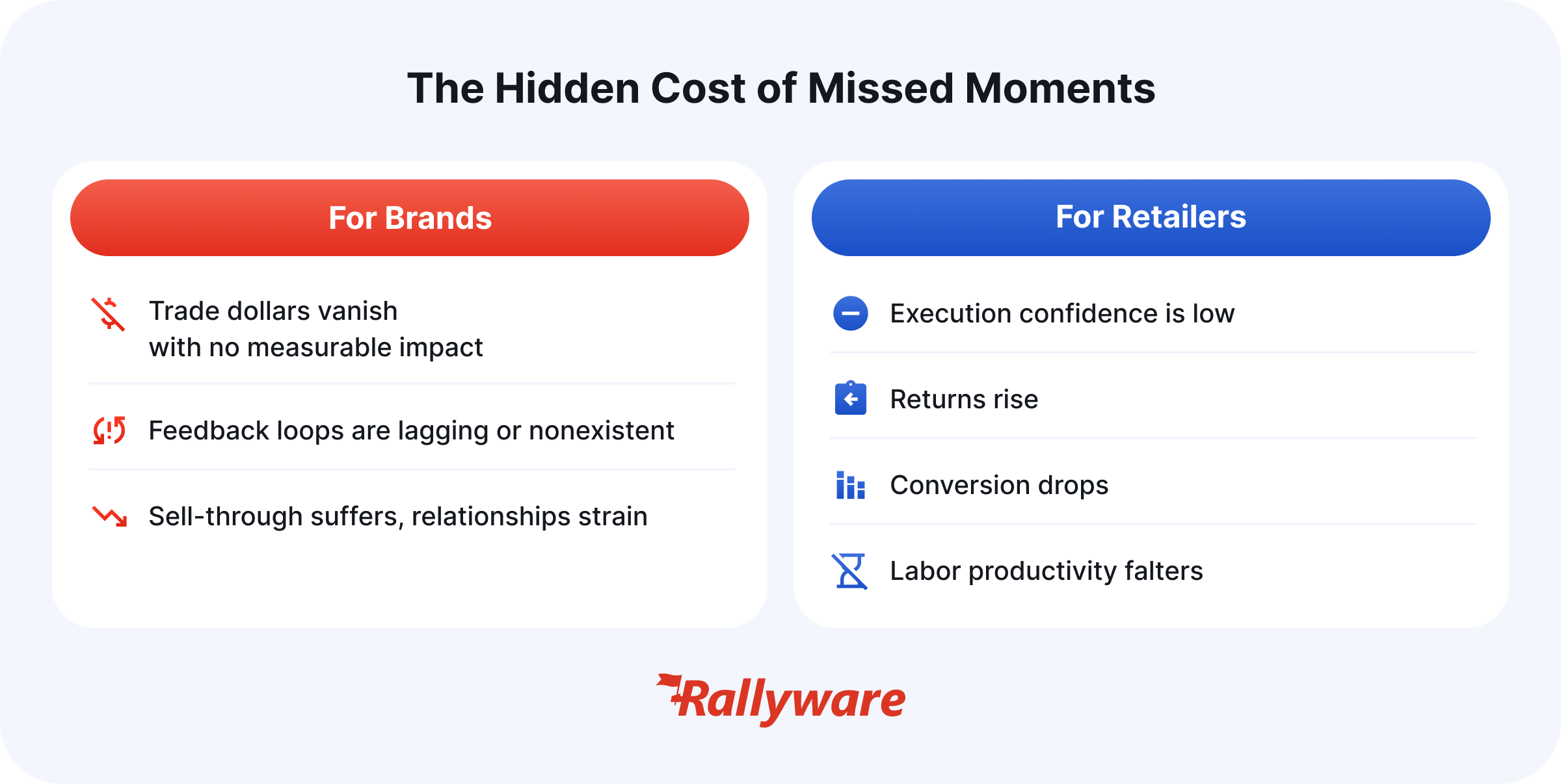
Why retail associate training must go real-time
Today’s top-performing retailers are using intelligent enablement platforms to:
- Trigger training based on campaign launch or low product sell-through
- Personalize content by region, store, or role
- Embed learning into daily workflows, not in isolation
These platforms move beyond basic LMS functionality. They unify training, incentives, communications, and execution tracking into one mobile-first interface. Think retail enablement superapp.
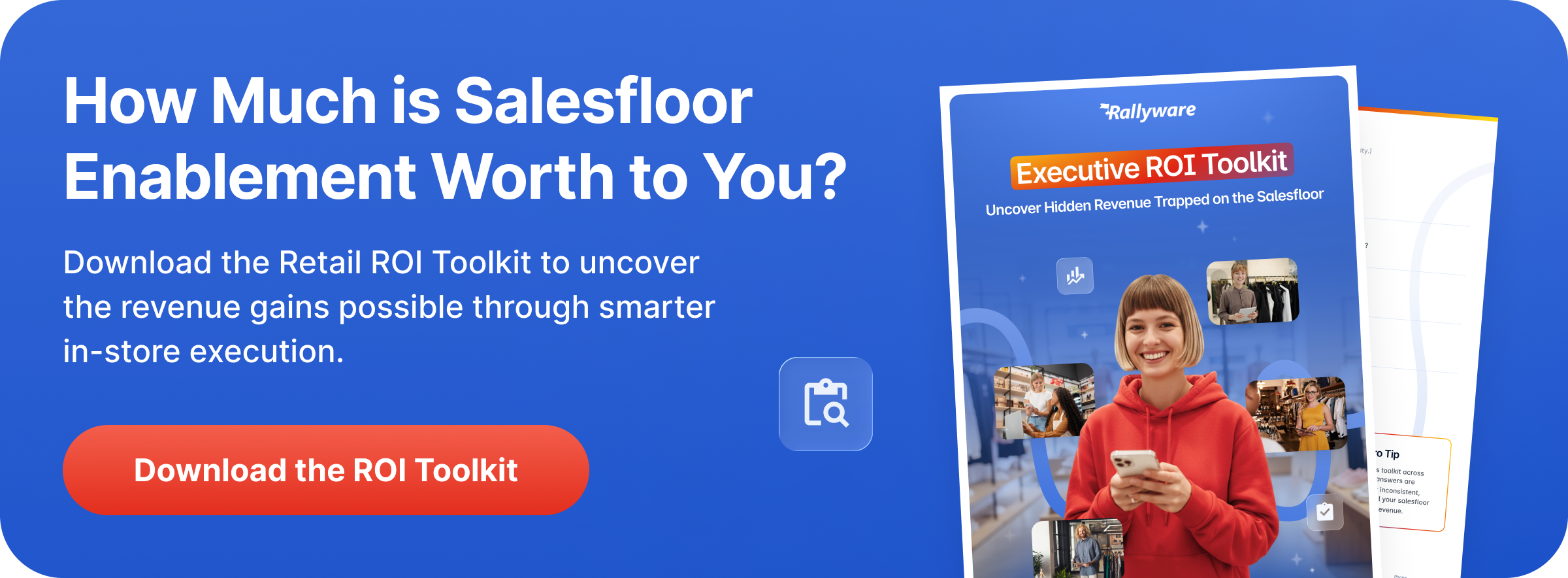
What brands and retailers get wrong (and how to fix it)
1. Delayed Distribution
Brand and retail marketing teams often create incredible content but fail to sync release with in-store priorities. By the time training hits the floor, promotions have peaked.
Fix: Integrate training delivery with retail execution timelines and trigger training based on campaign calendars, POS data, or regional sales dips.
2. One-Size-Fits-All Learning
Generic content is hard to apply. Associates in high-volume stores need different messaging than those in boutique formats.
Fix: Segment training by store type, associate role, or performance tier. Trigger product learning only when relevant inventory is available.
3. No Feedback Loop
Brands often lack visibility into training completion, engagement, or sales impact. Retailers lack actionable, real-time, store-level insights. This leads to wasted resources and missed optimization opportunities.
Fix: Build a retail data feedback loop. Track completions, associate interactions, and link everything to POS data.
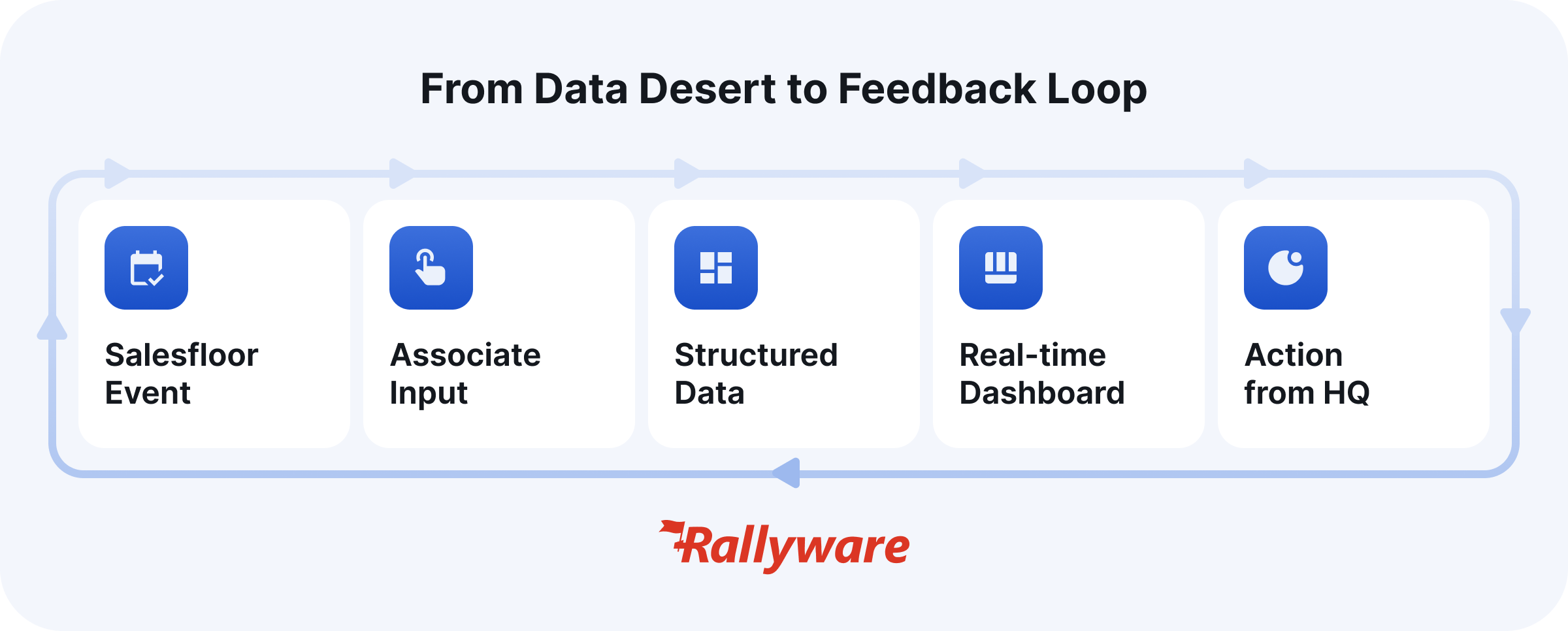
What leaders should be asking
- Are we capturing what our associates hear every day?
- Do we see problems before they show up in quarterly results?
- Can our enablement adapt as fast as customer expectations?
These aren’t just operations questions. They’re strategic ones.
Because as long as store-level feedback is invisible, leaders are stuck managing outcomes they can’t see in the moment they matter.
Learn more about why frontline enablement is non-negotiable.
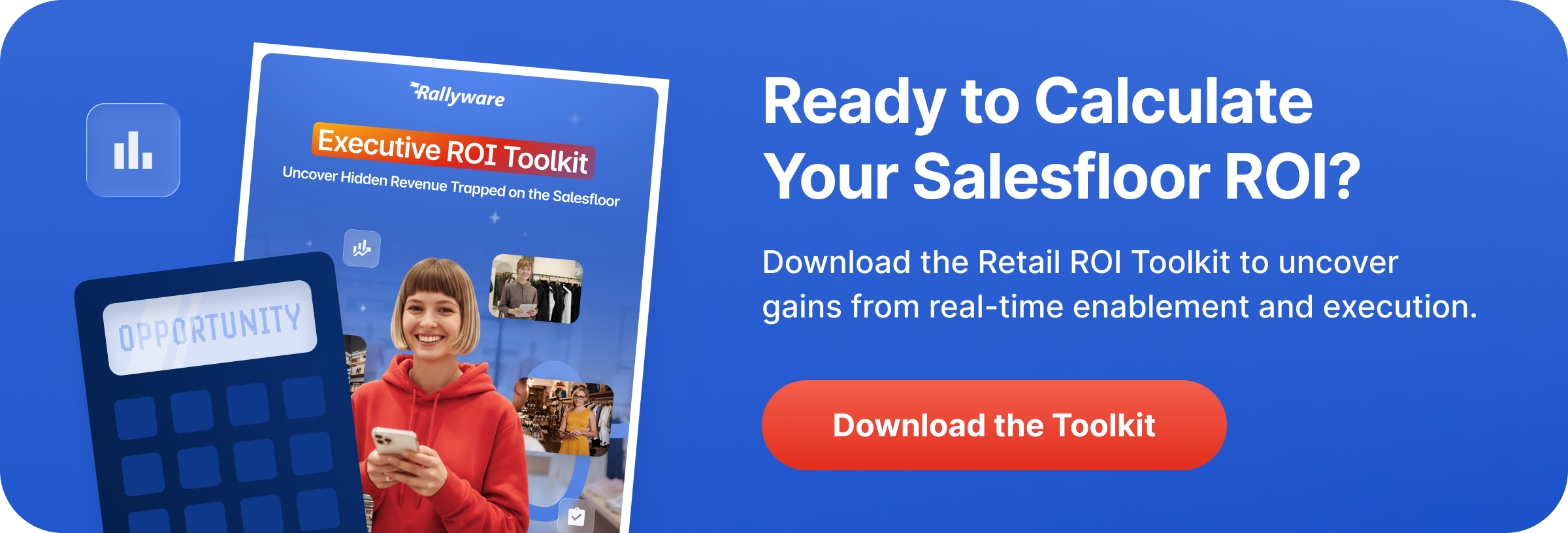
FAQ: Retail Associate Training
What is retail associate training and why is it critical in 2025?
Retail associate training refers to ongoing education and guidance provided to store employees to ensure they’re equipped to assist customers, represent brands accurately, and drive conversions.
How does retail associate training improve salesfloor performance?
It ensures associates have up-to-date knowledge on products, promotions, and customer service tactics, turning each customer interaction into a conversion opportunity. Structured training also reduces returns and improves compliance.
What kind of integrations are needed for intelligent training systems?
Effective retail associate training platforms integrate with POS systems, WFM tools, LMS platforms, and inventory databases to trigger learning at the right time, when it has the most impact.
How quickly can brands see ROI from upgrading training systems?
Retailers implementing intelligent enablement often see improvements in conversion, execution, and associate performance within weeks. Real-time data capture allows immediate iteration and optimization.
News and Insights on Workforce Training & Engagement
We’re among top-notch eLearning and business engagement platforms recognized for effective training and talent development, helping to empower distributed workforces
Subscribe
